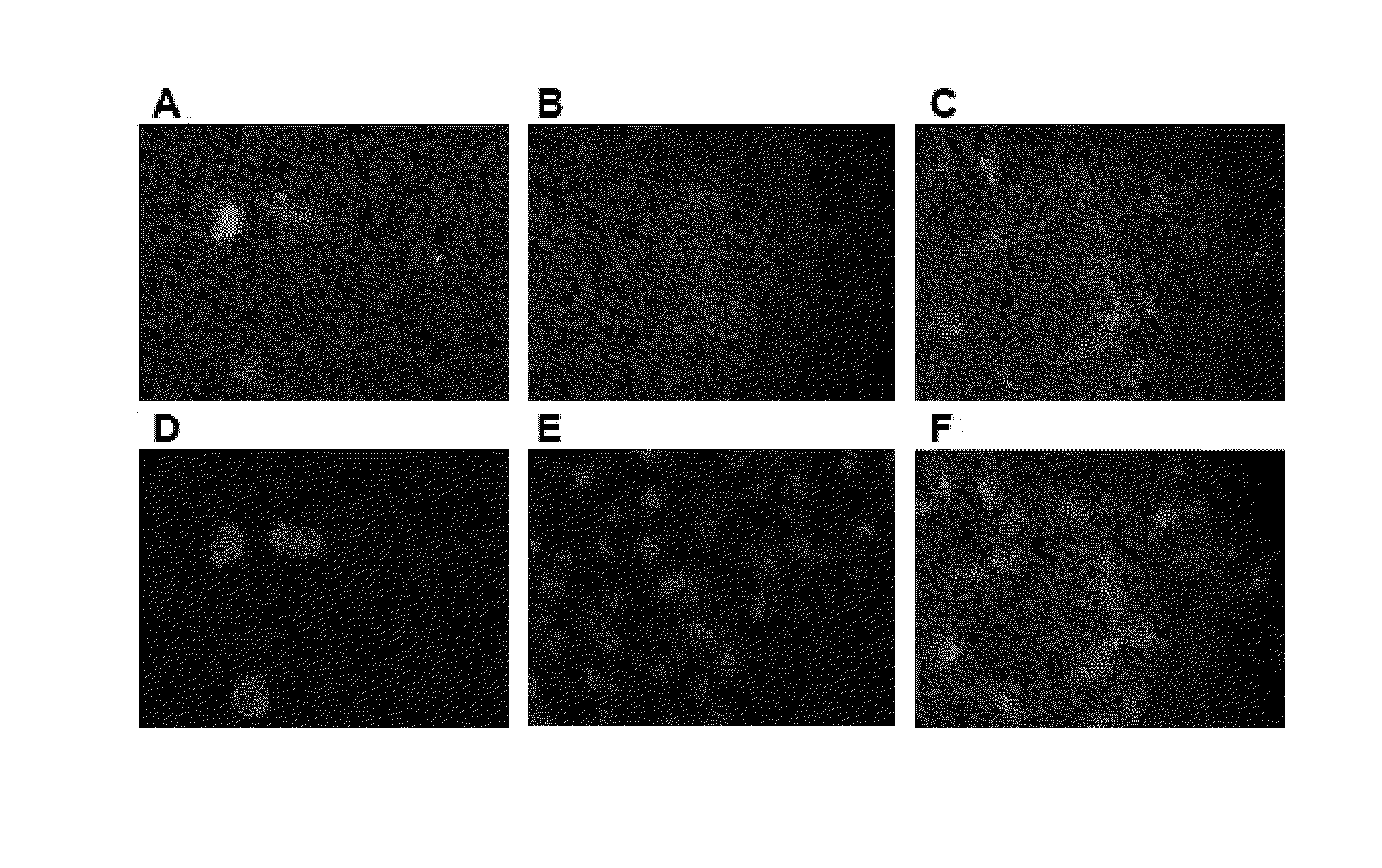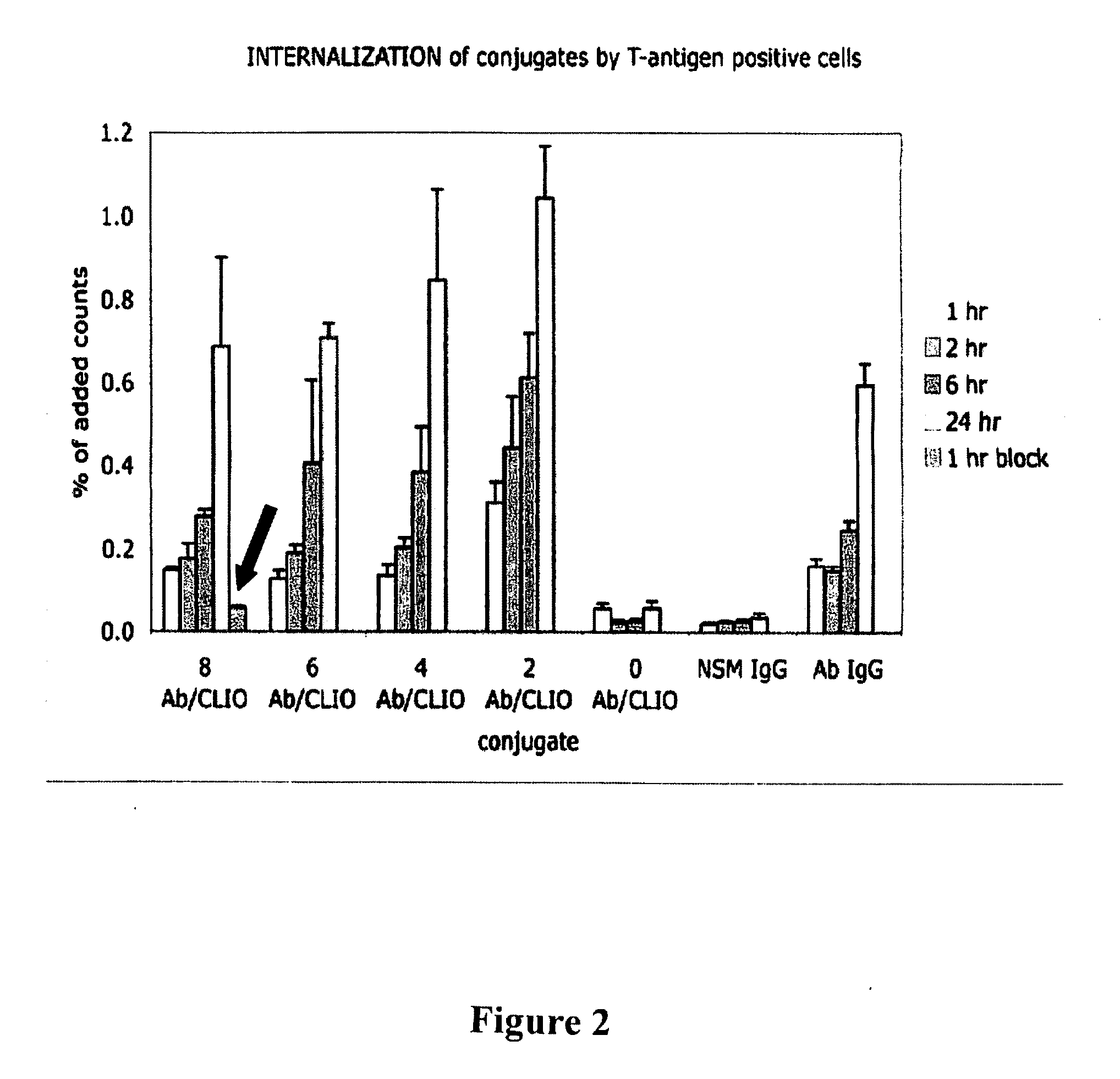Targeted nanoparticles for intracellular cancer therapy
a cancer and nanoparticle technology, applied in nanomedicine, drug compositions, instruments, etc., can solve the problems of inability to invade and/or destroy adjacent tissue, cancer cells grow with minimal or impaired control, and treatment is far from effective or convenient, so as to reduce the risk of pathology
- Summary
- Abstract
- Description
- Claims
- Application Information
AI Technical Summary
Benefits of technology
Problems solved by technology
Method used
Image
Examples
example 1
Preparation of Dextran-Coated Superparamagnetic Iron Oxide Particulates
[0200]In a typical procedure to prepare a dextran-covered colloid (adapted from Palmacci, 2003), 1005 milliliters of a 0.2-μm filtered aqueous solution of 450 grams of dextran T-10, and 31.56 grams (116.76 mmoles) of ferric chloride hexahydrate is cooled to 2-4° C. To the above cooled mixture is added a freshly prepared (within 15-30 minutes of use) 0.2 μm-filtered aqueous solution containing 12.55 gram (63.13 mmoles) of ferrous chloride tetrahydrate dissolved in water to a total volume of 43 milliliters. While being rapidly stirred, the above acidic solution is neutralized by the dropwise addition of 45 milliliters of 28-30% ammonium hydroxide solution cooled to 2-4° C. The greenish suspension is then heated to between 75° and 85° C. for an hour. The mixture is maintained in this temperature range for 75 minutes while being stirred constantly. The ammonium chloride, along with excess dextran and ammonium hydroxi...
example 2
Preparation of Dextran-Coated Superparamagnetic Iron Oxide Particulates
[0202]In another typical procedure to prepare a dextran-covered colloid (adapted from Palmacci, 2003), 381 milliliters of a 0.2-μm filtered aqueous solution of 170.5 grams of dextran T-10, and 31.56 grams (116.76 mmoles) of ferric chloride hexahydrate is cooled to 2-4° C. To the above cooled mixture is added a freshly prepared (within 15-30 minutes of use) 0.2-μm filtered aqueous solution containing 12.55 grams (63.13 mmoles) of ferrous chloride tetrahydrate dissolved to a total volume of 43 milliliters. While being rapidly stirred, the above acidic solution is neutralized by the dropwise addition of 28-30% ammonium hydroxide solution cooled to 2-4° C. The greenish suspension is then heated to between 75° and 85° C. over an one-hour heating interval. The mixture is maintained in this temperature range for 75 minutes while being stirred constantly. The ammonium chloride, along with excess dextran and ammonium hydr...
example 3
Stabilization of Dextran Coating on Dextran-Coated Superparamagnetic Iron Oxide Particulates: Generation of CLIO-NH2
[0204]The dextran coat of the particles may be stabilized by crosslinking according to Palmacci (2003). Briefly, 0.89 mL of dextran-coated iron oxide colloid (0.18 mmol iron) was diluted with 1.5 ml of 5M sodium hydroxide, after which 0.6 mL epichlorohydrin was added. Amine groups were introduced onto the surface of the particles by treatment with concentrated ammonium hydroxide (1.76 mL), followed by heating at 37° C. overnight. The final product was dialyzed against water using dialysis tubing with 12-14 kDalton molecular weight cutoffs. After aeration for 24 hours, the colloid was dialyzed and concentrated in a centrifugal concentrator with a molecular weight cutoff of 30 kDaltons.
[0205]The concentration of iron in the final product was confirmed using a spectrophotometric method (Moore et al., 2001, Radiology 221:244-250). Specifically, 10 μL of product was added ...
PUM
| Property | Measurement | Unit |
|---|---|---|
| Size | aaaaa | aaaaa |
| Size | aaaaa | aaaaa |
| Size | aaaaa | aaaaa |
Abstract
Description
Claims
Application Information
 Login to View More
Login to View More - R&D
- Intellectual Property
- Life Sciences
- Materials
- Tech Scout
- Unparalleled Data Quality
- Higher Quality Content
- 60% Fewer Hallucinations
Browse by: Latest US Patents, China's latest patents, Technical Efficacy Thesaurus, Application Domain, Technology Topic, Popular Technical Reports.
© 2025 PatSnap. All rights reserved.Legal|Privacy policy|Modern Slavery Act Transparency Statement|Sitemap|About US| Contact US: help@patsnap.com



